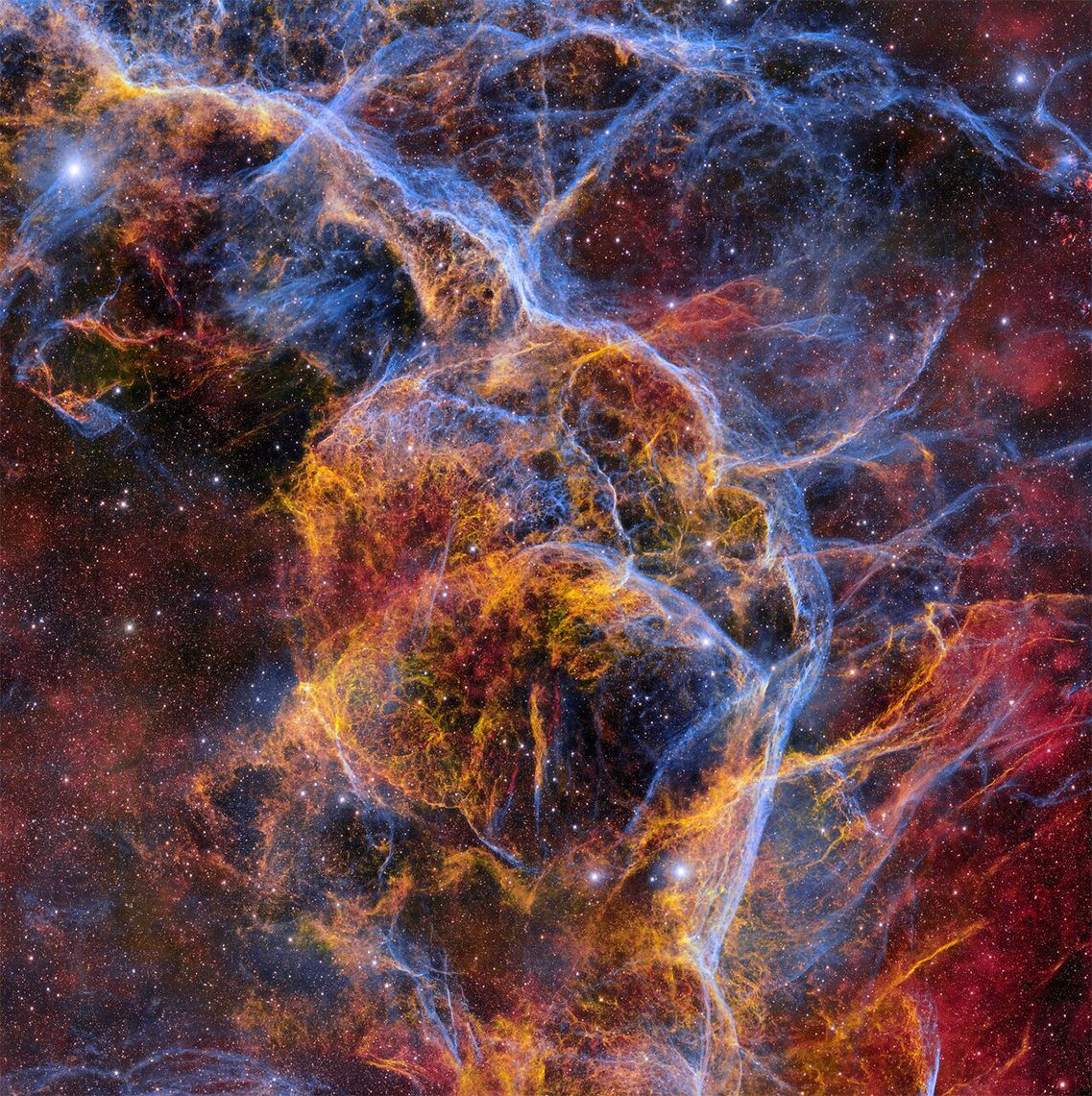Science
Related: About this forumAstronomers reveal one of the most detailed pictures of an exploded star ever taken
By Keith Cooper( space.com ) published yesterday
Astronomers have taken the most detailed image of the Vela supernova remnant ever. The stunning, 1.3-gigapixel image is also the largest ever released from the Dark Energy Camera.
This billowing mass of dust filaments and gas tendrils stretching across 100 light-years of space like delicate lace is the Vela supernova remnant — scattered ashes of a star that exploded about 11,000 years ago.
The image was acquired by the Dark Energy Camera (DECam), which is mounted on the Victor M. Blanco 4-Meter Telescope at the Cerro Tololo Inter-American Observatory in Chile. DECam was originally designed to conduct a survey of distant galaxies to measure the strength of dark energy as it accelerates the universe's expansion and draws those galaxies away from us. On the completion of that survey, however, DECam has been used in more general fashion. It is one of the most powerful wide-field instruments ever built, and this image of the Vela supernova remnant is proof of its capabilities. It's in fact the largest image ever released by the camera at 1.3 gigapixel (1.3 billion pixels) in size. For comparison, a top-of-the-line smartphone might have a 48 megapixel (48 million pixel) camera.
The image has to be large to capture all that detail across such a large swath of sky. As mentioned, the Vela supernova remnant is a nebula that is about 100 light-years across. Because it's about 800 light-years away from us, it means the Vela supernova remnant spans an area on the celestial sphere 20 times larger than the angular diameter of the full moon (which is 31 arcminutes, or half a degree across in the sky).

The Vela supernova remnant, which lies some 800 light-years away, is formed from the spilled guts of a massive star that exploded eleven millennia ago. (Image credit: CTIO/NOIRLab/DOE/NSF/AURA)
The Vela supernova remnant itself is of crucial astronomical importance. It gives us a good look at the late stages of the development of such a remnant, and offers insight into how material blown out by the supernova gradually disperses into the interstellar medium, which is the thin mist of gas that fills the space between stars. The shockwave from the ancient stellar explosion that formed the Vela supernova remnant is still expanding into space, where it is colliding with the interstellar medium and compressing it, creating the delicate filaments we can see in the image. Absorption lines from elements like calcium, carbon, copper, germanium, krypton, magnesium, nickel, oxygen and silicon — many of them ionized and doubly ionized — have been detected in the supernova debris as well. These are heavy elements forged either by fusion processes within the star before it exploded, or by the ferocious energies unleashed by the explosion itself.
More:
https://www.livescience.com/space/cosmology/astronomers-reveal-one-of-the-most-detailed-pictures-of-an-exploded-star-ever-taken
lastlib
(24,916 posts)Thanks for posting! these always inspire me to keep looking up!
Easterncedar
(3,531 posts)I love having my mind expanded first thing in the morning! Thanks, Judi Lynn
Hermit-The-Prog
(36,589 posts)Firestorm49
(4,195 posts)erronis
(16,863 posts)when it goes nova.
Arne
(3,603 posts)KS Toronado
(19,580 posts)
et tu
(1,883 posts)it's using its cloaking device ![]()
Justice matters.
(7,518 posts)Hi, Mother! ![]()
jaxexpat
(7,794 posts)jaxexpat
(7,794 posts)....with gratitude to the part of my mind which remembers,
Yeah, darlin' gonna make it happen
Take the world in a love embrace
Fire all of your guns at once
And explode into space.
Born to Be Wild
Steppenwolf